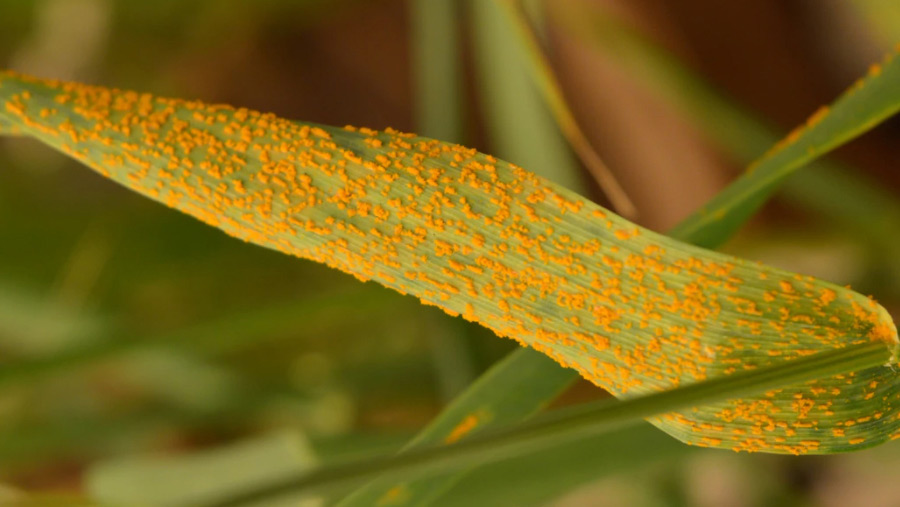Advertiser content
Septoria explodes and yellow rust rises: How to optimise your T2
- High levels of wheat disease have been confirmed across the UK by rapid diagnostic test SwiftDetect
- Challenges facing growers include increasing resistance, banning of key fungicides, and rising costs
- Optimising your T2 spray could help better protect your yield
They’re two of the most devastating foliar diseases in the UK. Septoria and yellow rust can each cause yield losses of up to 50%, costing the wheat industry millions each year.
Thriving in warm but damp conditions, the weather this spring couldn’t possibly be more favourable. You may therefore not be surprised that many farmers and agronomists are battling outbursts of these diseases across the UK.
SwiftDetect, an independent rapid diagnostic test for wheat and barley disease, has shown high levels of latent septoria in the usual suspects, Skyscraper, Skyfall and Zyatt, particularly in Scotland, the West of England, and the Midlands.
Even for Extase, considered to be a relatively resistant variety, medium levels are already present.
For yellow rust, infections in the Eastern counties and East Midlands are most severe. Visible signs have emerged, and the disease is spreading quickly.

© Swiftdetect by Microgenetics
Another tough year?
It’s certainly looking like it.
Unpredictable weather patterns add to the difficulty in determining the severity of disease by eye and allows infection to explode and even move into new areas.
The removal of certain key fungicides such as chlorothalonil, and soon tebuconazole, mean disease is harder to treat.
The ability of pathogens to quickly evolve adds to this stress, with more resistance to treatments and new varieties being affected.
These factors are unfortunately out of the control of growers. To overcome the uncertainty, fungicides are often blanket sprayed to try and protect yield, using a product and dose rate based on visible signs of disease.
This leads to another challenge.
Wheat diseases often have long latent periods. As Chris Steele, crop diagnostic product manager at SwiftDetect, warns: “Just because you can’t see it, doesn’t mean it’s not there”.
“Septoria may infect and reside inside a leaf for 14 to 28 days before visible signs emerge. For yellow rust, it can be up to 14 days. If you rely on visible signs of disease, you could be lured into a false sense of security”.
This is something Chris observed following T0 sprays this season. “Many growers skipped their spray or opted for a less robust treatment because the leaves looked healthy, but this wasn’t enough to knock back yellow rust. At pre-T1 spray period, SwiftDetect was already identifying medium levels of septoria. This shows the importance of testing before you spray”.

© Swiftdetect by Microgenetics
The takeaway for T2
Your flag leaf has the greatest impact on yield, so protecting it with your T2 is vital – especially in difficult disease years.
There are many contributing factors when it comes to optimising your T2. Firstly, when you spray. A day or two can make a huge difference in the success of your treatment.
“Traditionally, sprays have been timed according to the growth stage of the crop”, Chris explains. “For T2, this means spraying at Growth Stage 39”.
However, using a rapid diagnostic test like SwiftDetect can help. Uniquely sensitive, SwiftDetect can quantify disease levels down to just a few pathogen cells.
Moving forward, this could mean Farmers and Agronomists spray according to the level of disease in their crop rather than Growth Stage for better targeting.
“This is where the 1 business day turnaround comes in handy. You can make fungicide decisions in real time”.
Choosing what product to go for and the dose rate is also made easier when you know how much latent disease is in your crop.
“If your results show disease risk is low, there may be scope to make savings by using simpler tank mixes or more cost-effective products. Alternatively, your results may indicate a more robust fungicide strategy is needed to save your yield. This leads to less waste; some of our customers have even saved thousands this way”.
SwiftDetect costs £70 per test and you can get 25% off when ordering online by using our exclusive discount code: FW2022.
If you’d like to learn more, visit the SwiftDetect website or see the team at Cereals, The Arable Event and Groundswell.
Provided by
SwiftDetect, developed by independent business Microgenetics, offer uniquely sensitive rapid crop diagnostic tests. Gain insight to make better fungicide decisions within one business day.
